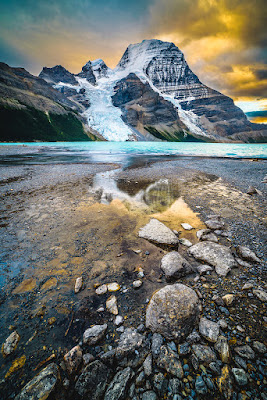THE SEARCH FOR SUBJECTS
What is the difference between a photographer and a picture taker? With so many images online and camera phones everywhere you look, there seems to be a blurred line that differentiates between the two. Set up an Instagram account or a website, add the word photography to your name and all of a sudden you're a photographer! Really?
For me, there are a number of things that put someone in the 'photographer' category. Just as having a tool belt doesn't make you a carpenter, a paintbrush an artist, or a frying pan a chef, having a camera doesn't make someone a photographer. So what does? In my view, it boils down to a search. A search to make imagery with impact and emotion.
In the next few posts, beginning with this one, I will outline a few things that photographers are on the lookout for to create visually appealing work. Today: the search for subjects......
In landscape photography a person may travel the globe in search of interesting subject matter. Obviously this isn't an absolute necessity as beauty can often be found in our own backyard. But that being said, it would be very rare for a casual picture taker to put forth too much effort to get a photograph.
A photographer will search online for potential locations. They will organize holidays and trips just so they can acquire a particular shot. They will travel to areas and scout out specific locations and return later to capture an image. This will take time and expense. Picture takers generally will not go to these lengths.
The photograph above personally illustrates this point. When planning a family trip to Scotland, I researched ahead of time locations that would lend itself to interesting subject matter. Castles were one of the first things that came to my mind. Upon arriving at Tantallon Castle on the east coast we obviously had to look around and do the tourist thing which included checking out the visitor center. While there I noticed a book that displayed a shot of the castle that was not possible to achieve on the castle grounds. I asked how I would be able to view the castle from this angle and now it was on!
Driving further down the coast we went off the beaten path, through a farmers property, fed a pound coin to an electric gate, down to a small area to park the car. Following old wooden steps we descended down to the sandy, rocky coast with the vast ocean in front of us. Where was the castle? Hiking further up the coast, the castle finally came into view and the search for my subject was over. While the kids made castles in the sand I concentrated on achieving an interesting composition of my own castle.
Did this take time? Absolutely. Expense? A pound coin at minimum. Effort? We had no idea where we were going or where we would end up but it was a mini adventure. I'm not so sure a casual picture taker would do this. Most likely they would stay on the highway, pull over, roll down the window, take a quick snapshot and continue on their way. But if you can relate to this little story, then in my estimation anyways, you have taken the first step to becoming a photographer. Thanks for looking!






















